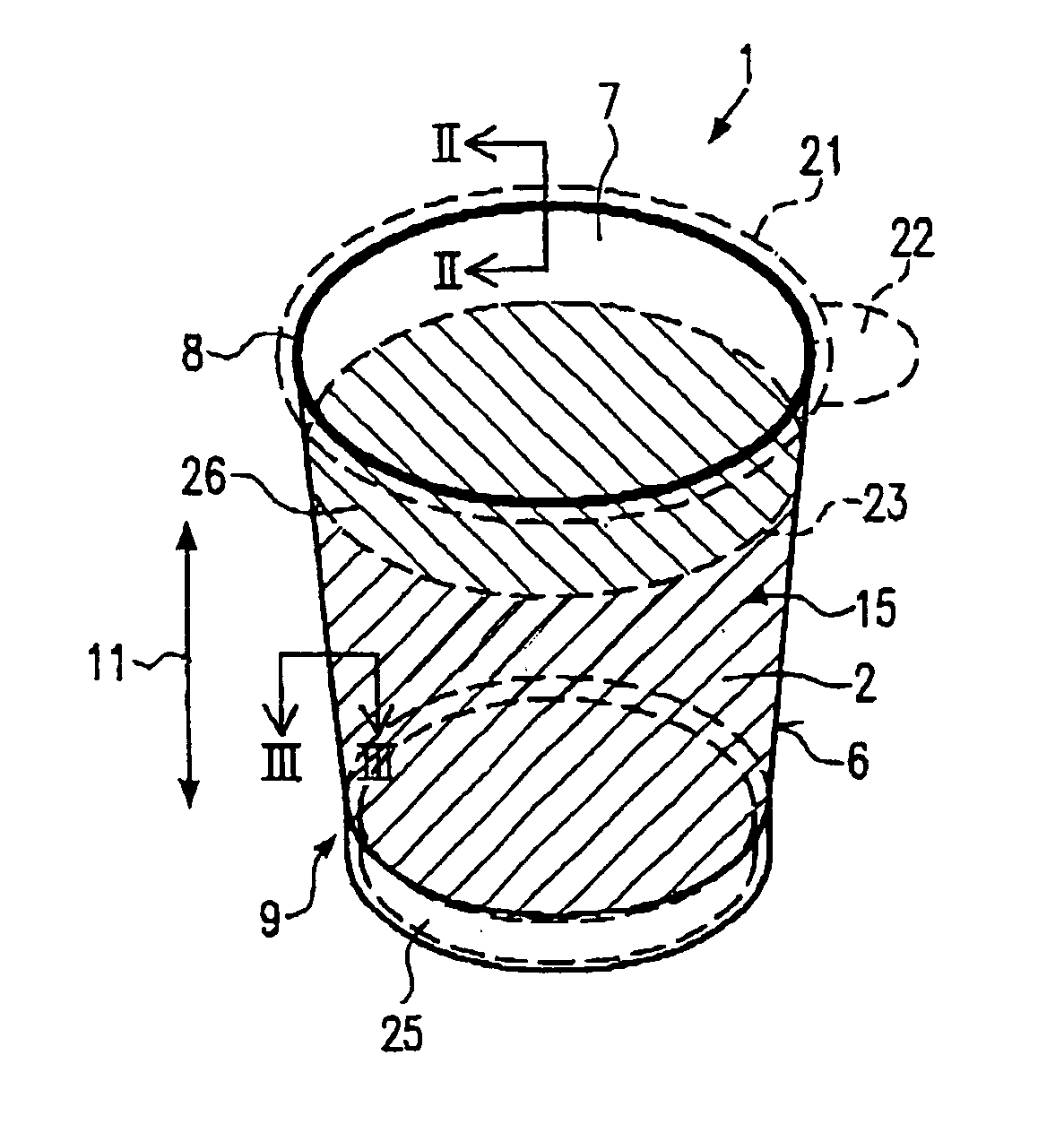Container
- Summary
- Abstract
- Description
- Claims
- Application Information
AI Technical Summary
Benefits of technology
Problems solved by technology
Method used
Image
Examples
Embodiment Construction
[0074]FIG. 1 shows a container 1 in a side view which has a cupulate design. Container 1 comprises a withdrawal opening 7 at its upper end in FIG. 1 which is surrounded by a rolled opening edge 8, also see FIG. 2.
[0075] A lid 21 is tightly attached to the opening edge 8. At least at one location, a lid handle 22 serving for drawing off the lid 21 from the opening edge 8 radially projects to the outside from the lid.
[0076] Food 2, which can be liquid, pasty, throwable or pourable, is filled in the interior of the container. The food 2 is filled in the container up to the filling level 23.
[0077] The container 1 comprises a container wall 6 which is formed by a blank according to FIG. 5. The container wall 6 is made of a transparent and fluid tight material.
[0078] In the embodiment according to FIG. 1, the container 1 comprises a bottom insert 25 at its end 9 opposite the withdrawal opening 7. The same is at least partially placed over or in the wall 6 from the outside and connecte...
PUM
 Login to View More
Login to View More Abstract
Description
Claims
Application Information
 Login to View More
Login to View More - R&D
- Intellectual Property
- Life Sciences
- Materials
- Tech Scout
- Unparalleled Data Quality
- Higher Quality Content
- 60% Fewer Hallucinations
Browse by: Latest US Patents, China's latest patents, Technical Efficacy Thesaurus, Application Domain, Technology Topic, Popular Technical Reports.
© 2025 PatSnap. All rights reserved.Legal|Privacy policy|Modern Slavery Act Transparency Statement|Sitemap|About US| Contact US: help@patsnap.com


